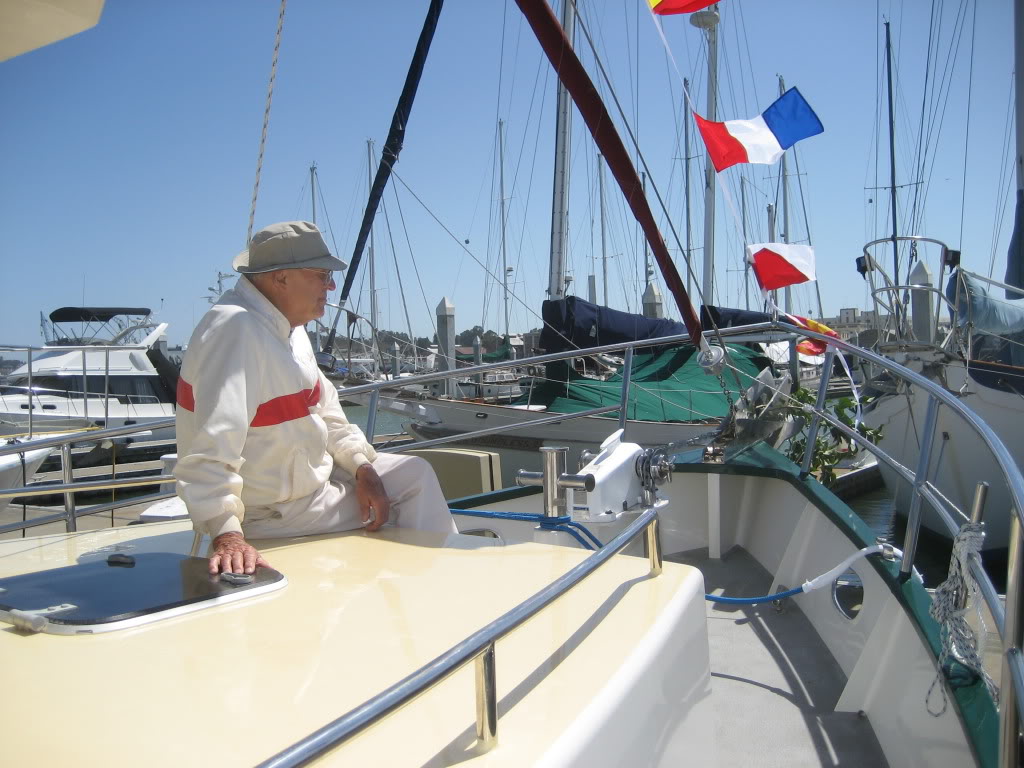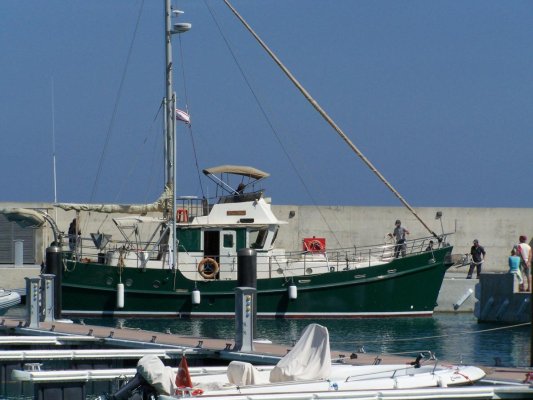We used exactly what we stated - we refueled twice (Madeira & Cape Verde) before heading across to UY.
Ghostrider42,
What engine is in the boat?
What RPM was used during the trip?
One of the reasons I like the Diesel Duck design is low fuel usage. I do not want to be running across the water at high speed, so moving along slowly is just fine. I am looking at the Diesel Duck design details and looking at various engine specifications trying to figure out which RPM would give about 1 GPH. This is simple to do.
My concern is that low RPM to get 1 GPH might not be good for the engine. I have a JD tractor and most of the work I do with the tractor does not require PTO speed which is about 2600 RPM. The engine tops out at 3000 RPM. For a few years I would run the engine at about 1600 RPM but used oil analysis showed fuel in the oil. I bumped up the RPMs to 1800ish and no more fuel in the oil. The amount of fuel in the oil was within specifications but I don't want fuel in the oil at all. And I sure would not want fuel in the oil in a boat engine.
I also would prefer to have a normally aspirated engine but looking at JD engines it seems I would have to have a turbo to get the HP specified by the boat design. There are normally aspirated engines around 80-85 HP which seems adequate.
The other issue I have is does the boat rally need all of this HP? The Diesel Duck 48 will use about 14 HP to go 7.4 knots and 40 HP to go 8.8. Well, 7 knots is fast enough for me, so does the boat really need 100+ HP? [SIZE=+2]
[/SIZE]To go 15% faster, takes almost 3 times the HP and corresponding fuel usage.
The engine needs to supply some power and maybe hydraulics but I do not see why the boat needs a 110 HP engine. The higher the HP the worse the fuel burn and I wonder about running the lower RPMs to use less HP to minimize GPH.
Later,
Dan




 At the time, the drive from work to home took about 70-80 minutes one way and I would get stuck in traffic for about 10-20 minutes on each leg of the trip. This was stop and go traffic followed by 55 MPH driving. The truck ended up with a bit of fuel in the oil because of idling in the traffic.
At the time, the drive from work to home took about 70-80 minutes one way and I would get stuck in traffic for about 10-20 minutes on each leg of the trip. This was stop and go traffic followed by 55 MPH driving. The truck ended up with a bit of fuel in the oil because of idling in the traffic. 

